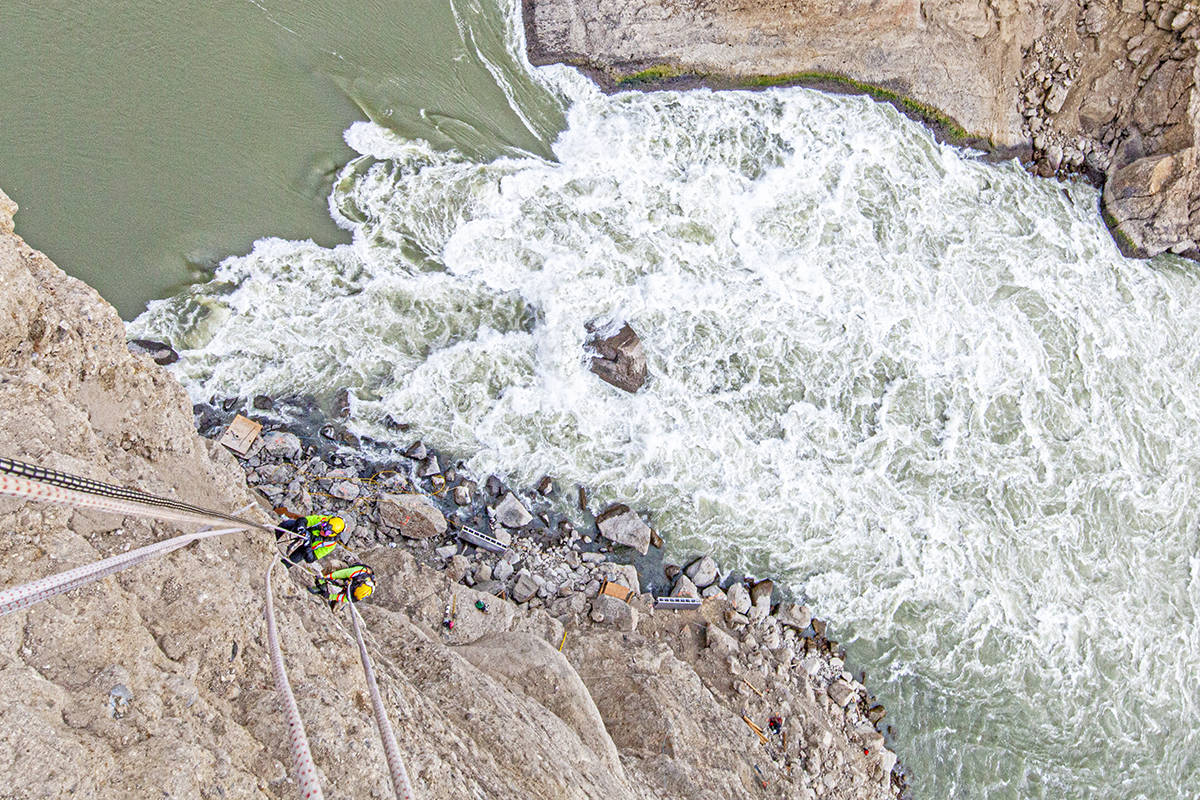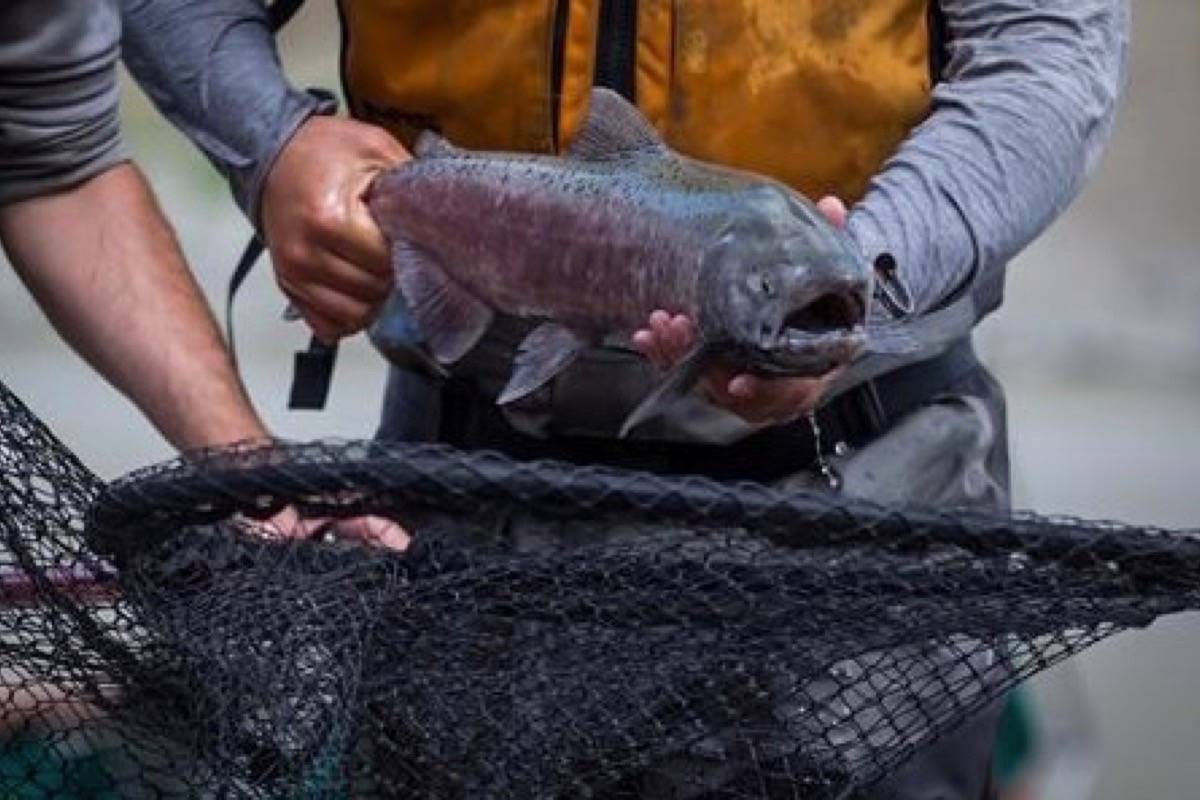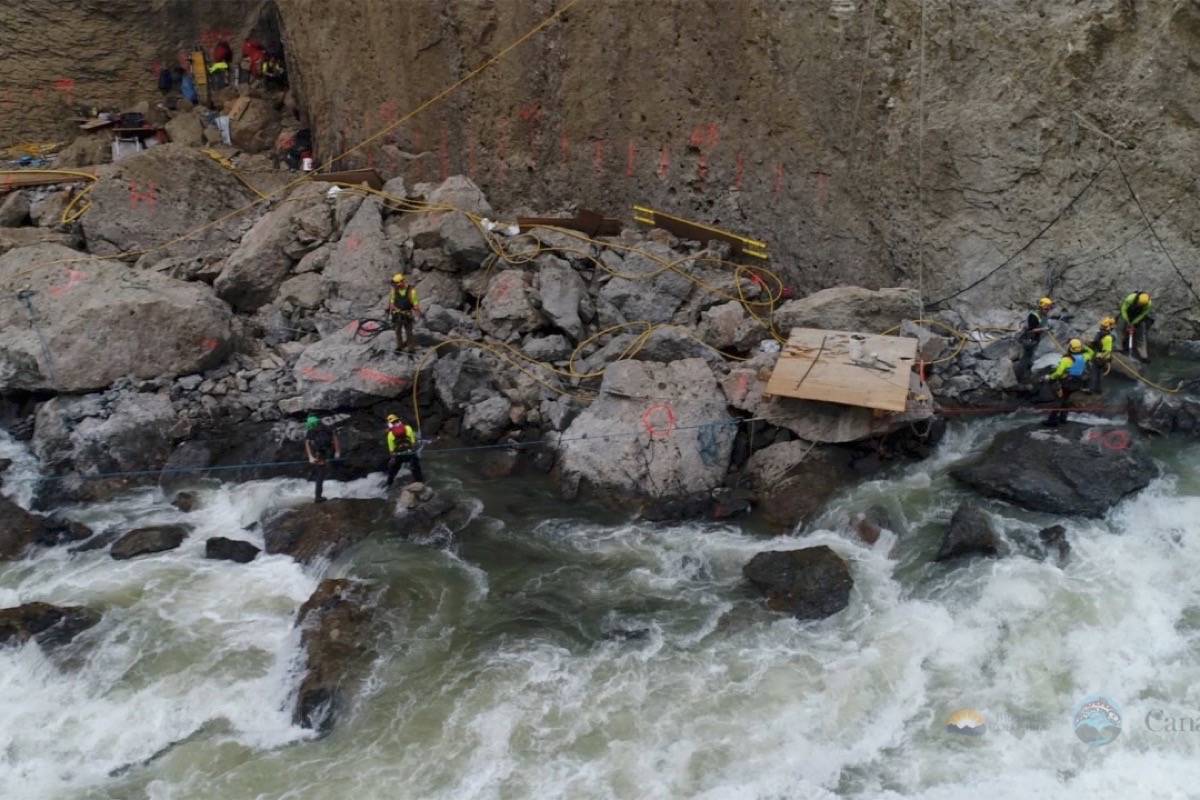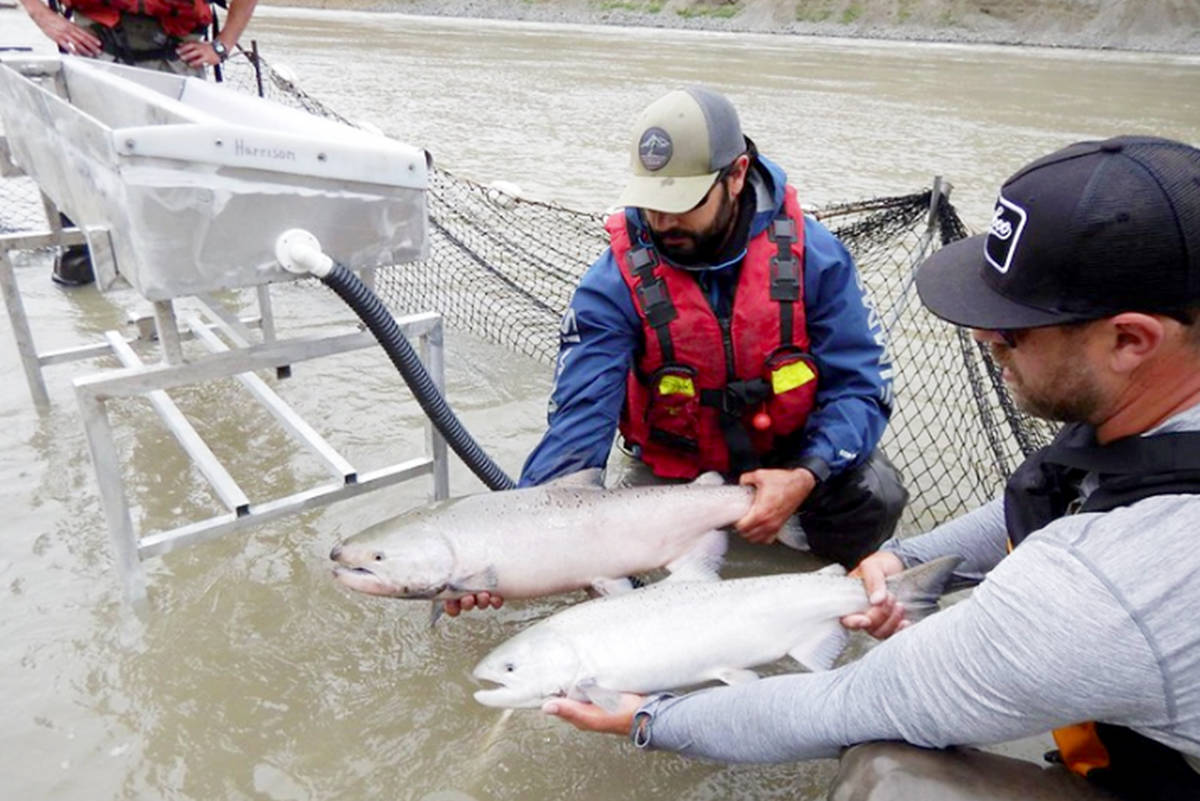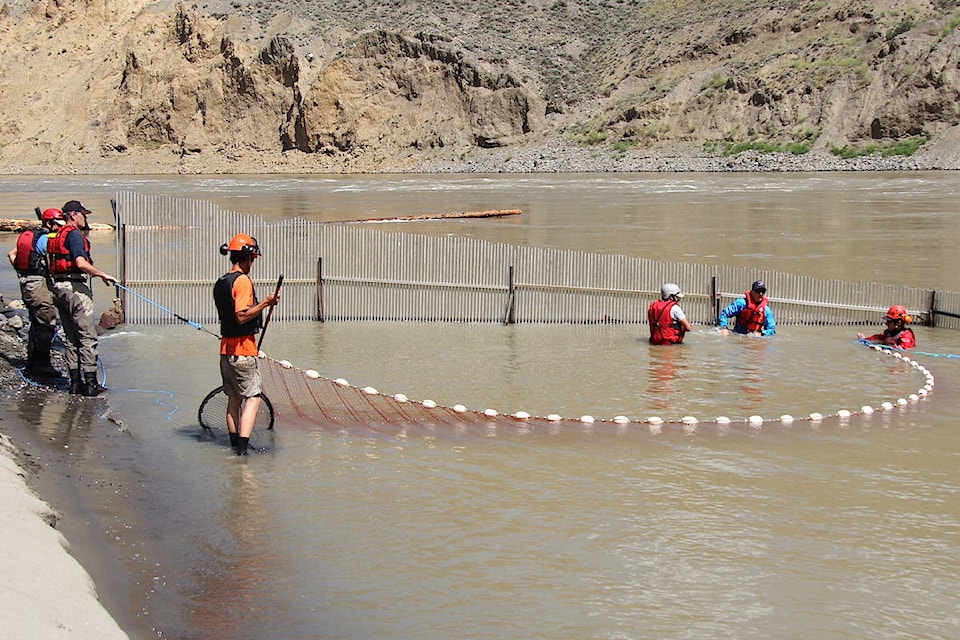From helicopters they could see fish with parts of their heads missing. They beat them against the rocks trying to get upstream.
Dustin Snyder described this scene. He is from Spruce City Wildlife Association (SCWA)and vice president of a little hatchery near Prince George.
Mortally wounded salmon struggling to reach spawning grounds is disturbing. The public, however, didn’t learn that fish were dying throughout the Initial Emergency Phase (June to September 2019) of efforts to get them past the Big Bar landslide.
July 27, at a media briefing in Lillooet, I asked Fisheries and Oceans Canada. “are you seeing dead fish?”
There was no answer.
Instead, we watched clips of salmon helicoptered upstream on TV, and “media updates” celebrating hundreds of salmon “successfully transported”.
“Was it successful?” I asked fisheries spokesperson Leri Davies back then.
“It was effective in assisting fish that had no other way to move upstream,” she said. But, on Dec. 17, 2019, a fisheries “overview” proved methods used didn’t work.
Millions of fish were predicted to return above Lillooet. Only 275,000 did.
Of those, 60,100 were transported, (40 per cent) of those moved up “multiple times.”
High mortality “occurred while fish matured in holding.”
Fourteen runs face extinction.
For example, 26,000 early Stuart sockeye passed Big Bar, but only 89 (0.34 per cent) made it to spawning grounds, the high mortality due largely to “capture and stress.”
Many rivers saw “0-10 spawners.”
Overall escapement was a mere 3,000, “10 per cent of the brood year five years ago, 12 per cent of the 1980-2018 average,” and the “lowest in 30 years.”
The tole had been predicted.
In August 2019, Don Willimont of SCWA, disputed fisheries’ rosy accounts.
“We’re struggling to get a female and a male to the hatchery,” he reported.
Chilcotin First Nation Chief (Tsilhquot’in) Joe Alphonse said, “Most of those fish died.”
Both knew helicopters exhausted and stressed fish, and said so. Alphonse advocated a side channel during low water – the window of opportunity from Decemember to March.
A suggestion by Dean Werk (Fraser Valley Salmon Society), and Matt Foy, a retired fisheries biologist, to blast rock was ruled out while fisheries considered whether “to do nothing,” – let nature take its course – was their best option, and used dip-netting and angling to capture fish.
Fisheries repeatedly claimed it “discovered” the slide last June and responded “immediately.”
I say, ‘not true.’
Rock didn’t fall in 2019, but in November 2018. It wasn’t discovered by fisheries, but was – fortunately – found by a landowner.
There was no plan in place to deal with it.
Big Bar slide might have been mitigated with better planning and quicker action.
Many have asked why fisheries hasn’t used drones to monitor the river for problems.
Last August, then-Fisheries Minister Jonathan Wilkinson replied, “We don’t necessarily go up and down the river every six months doing inspections.”
Not a responsible answer when you consider runs impacted support 140 First Nations, represent 78 per cent ($45.4M) of B.C. commercial catch, 2,600 harvesting and processing jobs.
They generate $742M in revenue from an angling community that includes Werk, who says fresh-water fishing tourism is drying up.
“Our government is not set up to handle disasters, even to keep a species alive,” Snyder added.
“It lacks the need to get things done. The fatal flaw has been bureaucracy. That’s left a lot of people dumbfounded. The upside is that something is being done now.”
Engineering firm – Kiewit and Sons of B.C. – has begun to tackle the tons of rock that fell from a 130-metre cliff into the west side of the river, three boulders in mid-stream that created an impassable 3-metre waterfall, and a rocky knoll on the east bank.
It won the $17.6M contract posted last December on Buyandsell.gc.ca. A bid “was open to international trade partners (including CETA/ NAFTA) says fisheries’ Erin MacPherson.
Did trade agreements delay response? Probably.
Still, Snyder’s “more hopeful now than in the past. They are drilling holes in a rocky knoll labelled ‘big toe’ on the east side. There’s a crew of 70 on the ground and two excavators.”
Three work areas – labelled A, B, C, are sequenced targets. First is “crest material” in mid-stream where several huge boulders rest. Then, big toe, to open the channel and reduce water velocity. Lastly, debrei will be scooped from the west bank which received rock scaled off the cliff for work safety last year.
Speed is needed “to avoid extirpation of 2020 early sockeye and chinook,” but “clearing the slide could take years,” says the fisheries report.
READ RECENT COLUMN: Along the Fraser: RIP Parker (1991-2019)
Yet, sadly, “contingency plans” are just now being made.
Re-considered are the alternate passage, and emergency hatchery operations.
The construction deadline is March 15.
In an article entitled, Pacific Salmon and Steelhead Trout Watch (January 2020), UBC zoologist Eric Taylor notes all former fisheries ministers have refused to list salmon and steelhead at risk of extinction under the Species at Risk Act.
Why?
All species in B.C. “have declined from 15.6 million in 2013 to 4.4 million in 2018,” Taylor says. “The minister says the slide is a top priority. We’ll see if the political leadership exists.”
– Jack Emberly is a retired teacher, local author and environmentalist
